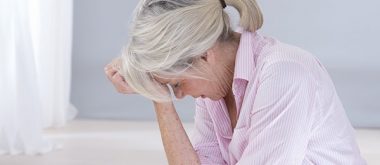We have long known that circadian rhythms change as we age. But we have just realized that it happens during aging because of the discovery of a set of genes.
If you have elderly relatives, you have no doubt noticed that they live by a different pace. As humans age, sleeping patterns start early and end early, with several naps throughout the day. Older people also experience insomnia more often, as well as fatigue. Sleepless nights are the norm in later years.
What is a Circadian Rhythm?
A circadian rhythm is a 24-hour cycle in the human life span. Sleep is one function that runs on a circadian rhythm. Insomnia is also related to this biological rhythm. It governs sleep/wake cycles and factors, like body temperature, that affects sleep.
Aging and Changing Circadian Rhythms

Older people become “morning people.” They rise earlier and orient more quickly than younger people. Biological time cues, such as body temperature, slows down as we age as well. Some changes in the circadian rhythm are actually damaging. Sundowning is an example. During a sundowning incident, a person will become agitated, irritable, confused, and disoriented during evening hours. This is especially true of those with dementia.
How Chronobiology Goes Hand-in-Hand with the Aging Process
Chronobiology is the study of cyclical phenomenon and physiological rhythms. Circadian rhythms and the way they affect sleep patterns of elderly people is a large part of chronobiology. Studies have recently shown specific genes are responsible for these sleep changes in later years. While they are present and active in people of all ages, they become the dominant factor for sleep cycles in later years. The theory behind their sudden dominance is to compensate for losses in other genes due to old age.
Light is the major factor influencing sleep circadian rhythms. It is the key factor in synchronizing the sleep cycle to the 24-hour day period. Even indoor lighting plays a part in the sleep cycle. The amount of time in outdoor, natural light combined with usage of indoor light determine the circadian rhythms’ relationship with sleep. Since most older people spend less time outdoors than in earlier years and go to bed earlier, their exposure to light is considerably diminished.
The more we learn about these mysterious biological tempos, the more we realize how much there is yet to discover. We can use the information to improve human lives as we age and to live longer healthier lives. Understanding how circadian rhythms work and how they affect sleep helps us accomplish that goal.





